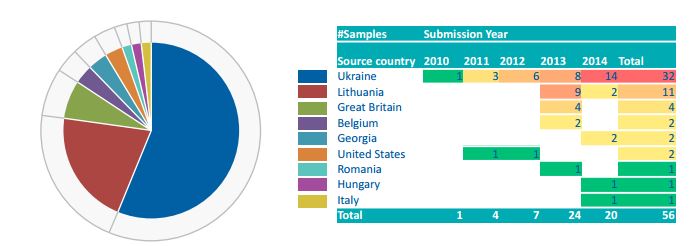BAE Systems Applied Intelligence has disclosed a Russian cyber espionage campaign codenamed as SNAKE that targeted Governments and Military Networks.
The British cyber specialist BAE Systems Applied Intelligence has disclosed a Russian cyber espionage campaign codenamed as SNAKE that remained undetected for a log time, at least for eight years.
The malware can infiltrate Windows XP, Vista, 7 and Windows 8 systems. The attackers behind the operation SNAKE penetrated highly secured systems all around the world, but most interesting revelation is that the Uroburos rootkit recently discovered by German security firm G Data Software was just one component of the overall SNAKE campaign.
“The cyber-espionage operation behind the Snake rootkit is well established, a sample compiled in January 2006 indicates that theactivity would have begun in at least 2005. It is also sophisticated, using complex techniques for evading host defences and providing the attackers covert communication channels. Toolmarks left behind by the authors ‘vlad’ & ‘gilg’, leave tantalizing clues as to the personas behind this.“states the report.
Uroburos is considered an advanced rootkit that is active since as far back as 2011, the researchers revealed that it was used to infect networks belonging to high-level targets, stealing data after setting up rogue P2P networks.
The disclosure of SNAKE campaign confirms the hypothesis made by researchers in G Data, the security community was facing with a large scale campaign organized by Russian entities.
From the technical point of view, SNAKE presented two very different approaches to the task of building a cyber-espionage toolkit.
“One approach is to delegate the network communication engine to usermodecode, backed up by a usermode rootkit. Another approach is to carry out all of the communications from the kernel-mode driver, which is a very challenging task by itself.”
For the SNAKE campaign the attackers used various pieces of malware, Western intelligence officers have found another spyware, dubbed Turla, used to infect government network all over the world.
Researchers linked the malware Turla to popular cyber espionage campaignRed October discovered by Kaspersky more than one year ago.
RedOctober campaign hit government, military and diplomatic organizations all around the world, Kaspersky team revealed that hackers behind the campaign have a Russian origin and adopted exploits common in Chinese cyber espionage campaign.
“It is sophisticated malware that’s linked to other Russian exploits, uses encryption and targets western governments. It has Russian paw prints all over it,” said Jim Lewis, a former U.S. foreign service officer.
The SNAKE campaign adopted sophisticated techniques to infect Windows systems bypassing security defense, it has the ability to hide in the victim’s web traffic.
“Hiding a few DNS/HTTP requests among busy network traffic allows Snakerootkit to stay unnoticed.”
The presence of a reconnaissance component in the Snake framework suggests the existence of an arsenal of infiltration tools.
“As demonstrated, the backdoor commands allow Snake to provide remote attackers with full remote access to thecompromised system. Its ability to hibernate, staying fully inactive for a number of days, makes its detection during that time very difficult.”
The researchers expect much more will be uncovered in the coming weeks, now that the campaign has been disclosed it is interesting to see how the attack will operate, dismantling this toolset and start from scratch, or continue using the spyware.
The espionage becomes more and more based of IT tools.

No comments:
Post a Comment